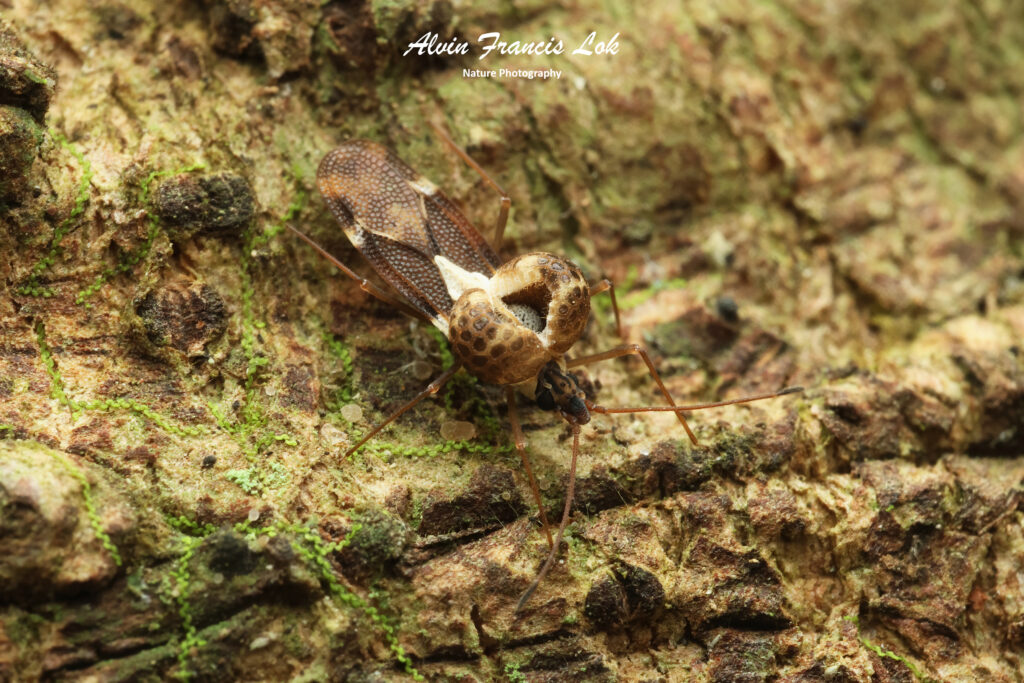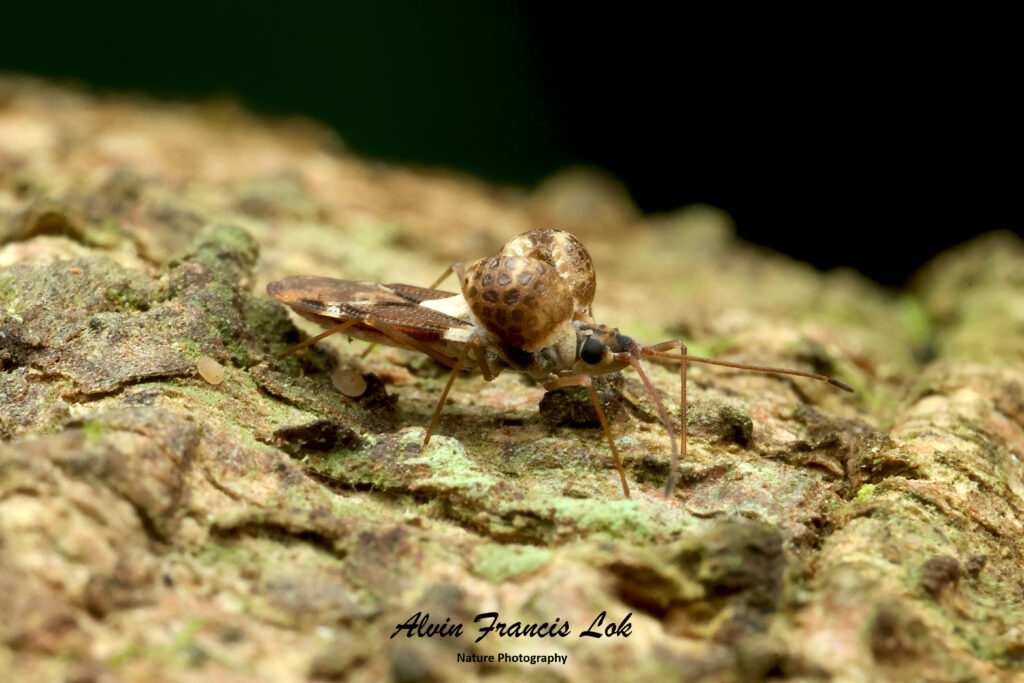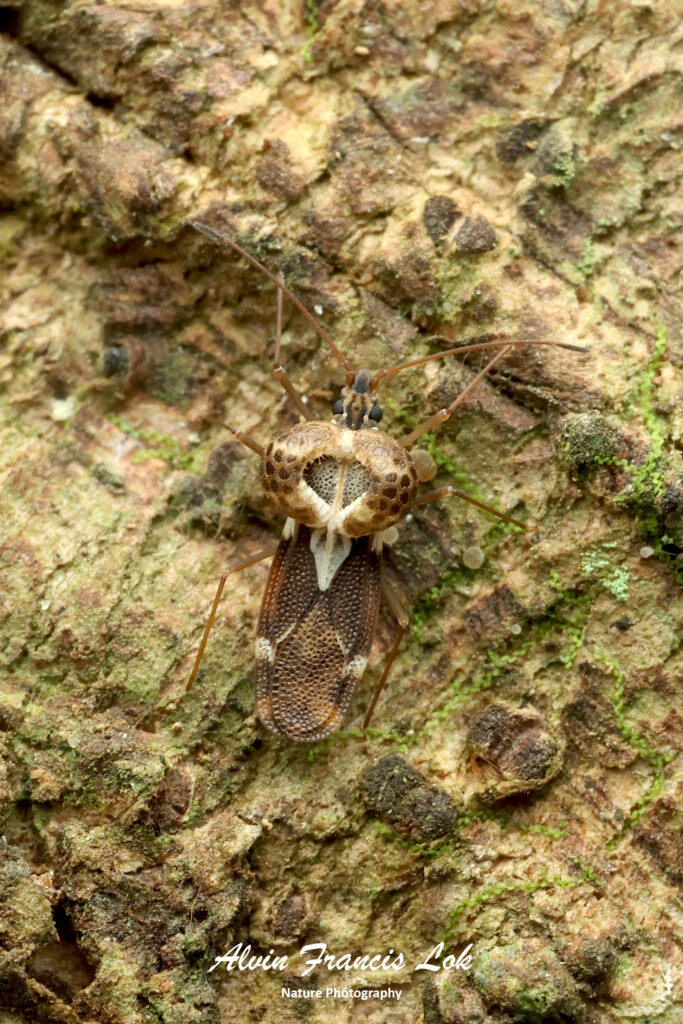The Tingidae are a family of very small (2–10 mm) Hemipterans, that are commonly referred to as lace bugs. This group is distributed worldwide with about 2,000 species.
They are called lace bugs because the pronotum and forewings of the adult have a delicate and intricate network of divided areas that resemble lace. Their body appearance is flattened dorsoventrally and can be broadly oval or slender. Often, the head is concealed under the hood-like pronotum.
Lace bugs are usually host-specific and can be very destructive to plants. Most feed on the undersides of leaves by piercing the epidermis and sucking the sap. The emptied cells give the leaves a bronzed or silvery appearance. Each individual usually completes its entire lifecycle on the same plant, if not the same part of the plant. Most species have one to two generations per year, but some species have multiple generations. Most overwinter as adults, but some species overwinter as eggs or nymphs. This group has incomplete metamorphosis in that the immature stages resemble the adults, except that the immatures are smaller and do not have wings.
Source: Wikipedia
Subfamily Cantacaderinae
Tribe Cantacaderini
Teratocader magnificus (Singapore)

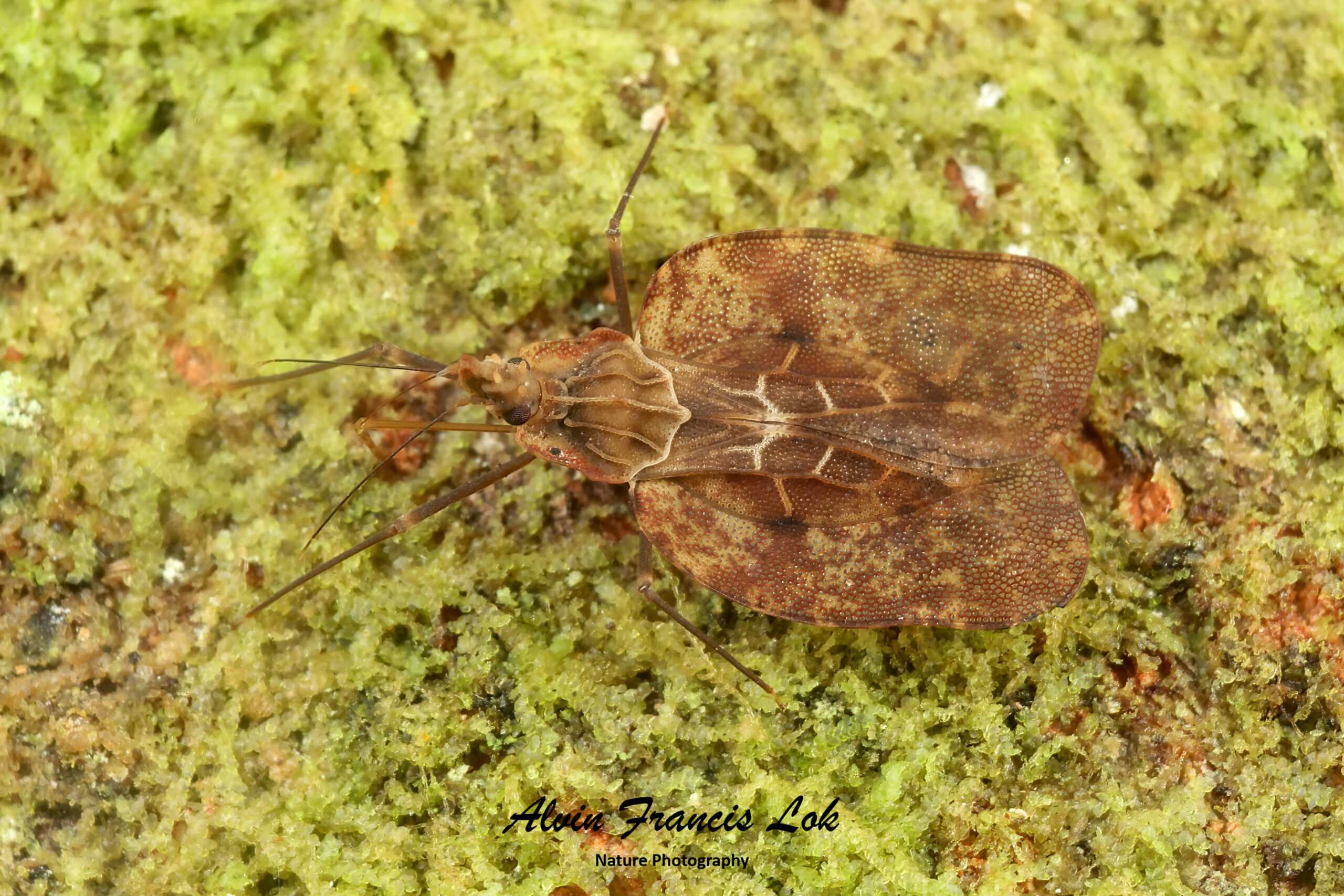
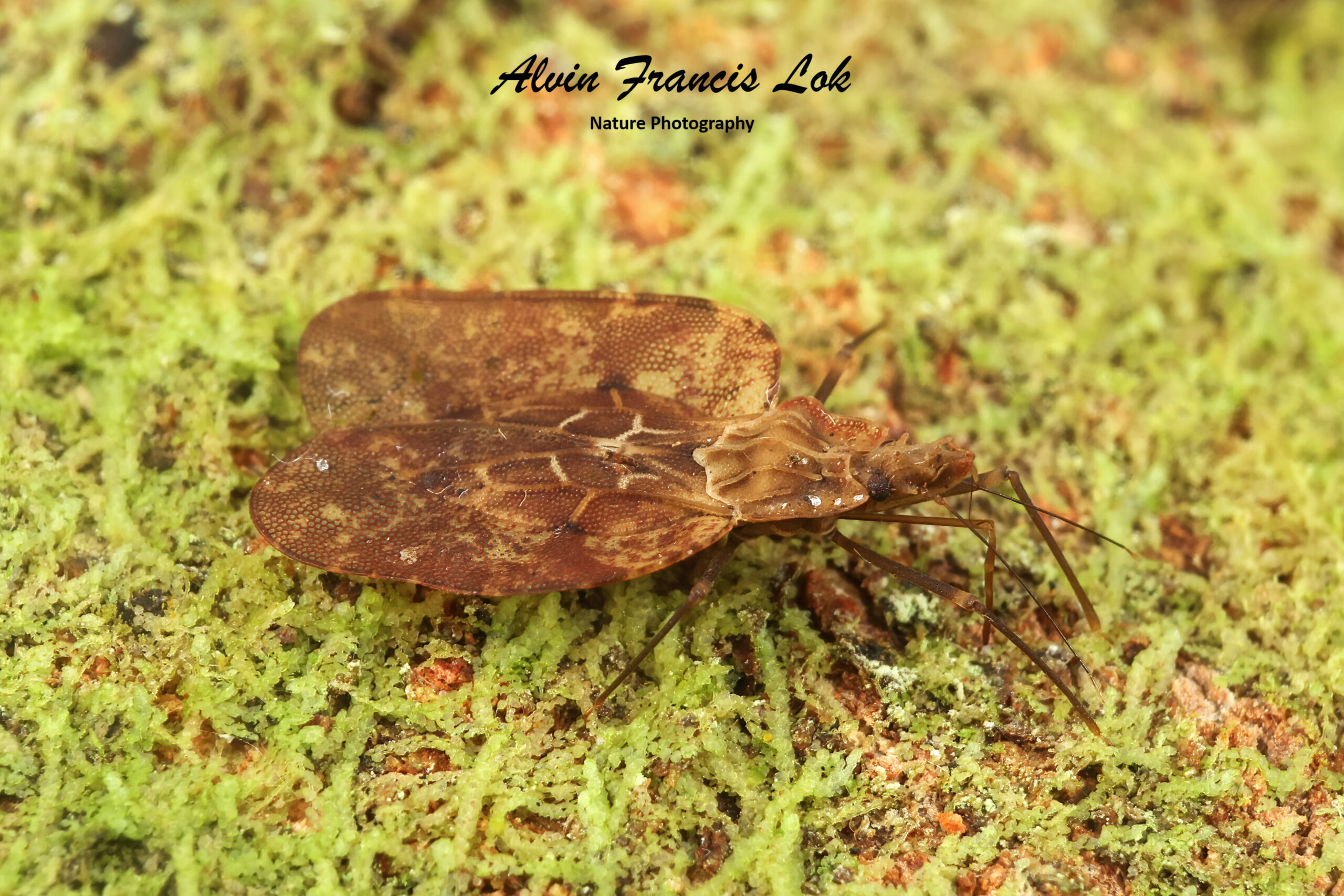
Subfamily Tinginae
Tribe Tingini
Ypsotingis sp. (Singapore)
